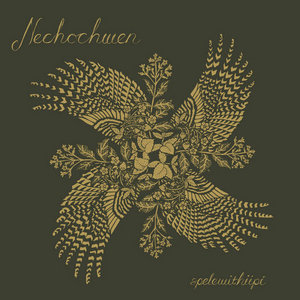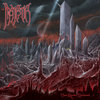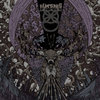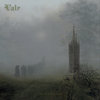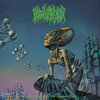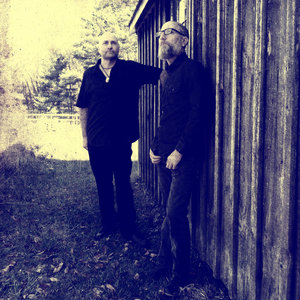Primordial Passage from spelewithiipi by Nechochwen
Tracklist
| 9. | Primordial Passage | 4:41 |
Credits
from spelewithiipi,
released May 9, 2025
spelewithiipi is, in a sense, a continuation of where our debut album, Algonkian Mythos, left off. That album was made before the elements of metal and progressive rock and folk rock became part of our sound and we never followed it up with a non-metal release. The earliest recordings on spelewithiipi go back to mid-2013, just after Oto was released. We knew that these song ideas did not belong on the albums we were working on at the time and yet they were not just “leftovers” destined to be bonus tracks on EP’s or compilations. It took time to see the big picture of how these songs would eventually fit together into a cohesive album - one that I like to listen to when I am camping or spending time in cabins of the woodlands around the Ohio River Valley. Eventually it came together, and in the timeframe that it was supposed to. This album has been in the background yet always present for eleven years. It was a welcome challenge in practicing album-craft slowly and intermittently.
In another sense, this album is unique in our catalog, something that at times I have misunderstood but ultimately have grown to love - not unlike the region that inspired it. It is filled with sounds of the influence of direct, unfiltered contact with what remains of the wildness of a specific region of Turtle Island. Language and cultural references are to the best of my knowledge based on what I was taught. Non-English titles are a mix of old eastern woodland and modern words and orthographies. We hope this album finds you well and piques your curiosity about the land and water where we live as well as in your own environment.
- Nechochwen
∙ + ∙ + ∙ + ∙ + ∙ + ∙ + ∙ + ∙ + ∙ + ∙ + ∙ + ∙ + ∙ + ∙ + ∙ + ∙ + ∙ + ∙ + ∙
lenawe’owiin – Over the past three decades, I have been been one with a group called the loyalhanna hotewe in the Laurel Highlands of Pennsylvania and connecting to indigenous family roots in Appalachia. I am grateful for all I have learned, and I feel fortunate to be around people who can guide me in this tradition. When I was recording this piece, Pohonasin asked me to recount one of the strangest dreams I could remember. It reminded me of the power of dreams, one of many aspects of lenawe’owiin - Native American way of being.
spelewithiipi – I have always lived along the same waterway – spelewithiipi or big turkey river, also known as the Ohio River and earlier, La Belle Rivière. Its beautiful valley has been home to indigenous people for countless generations. Whether driving over it, walking its shores, or just being near it, we give thanks and tribute through song to these mighty waters that once saw busy groups in twenty-five-foot dugout canoes cruising between mound sites and river camps.
tpwiiwe – This gentle yet hypnotic piece is intended as a musical “glyph,” in the spirit of a glyph on a prayer stick for giving thanks to sacred terrestrial and celestial beings, forces, and spirits. Each of these elements are a tpwiiwe or “one who brings truth.” When thinking about how these affect my day and my life, everything around me improves. I hope the listener will think about these things in their own lives in the spirit of giving thanks when listening to this music and can decide which tpwiiwe this song represents to them. In this way, we are putting earth and sky first.
othaškwa’alowethi behme – I learned about a strange, mysterious being many years ago which resulted in this bizarre melody. It is a creature with the body of a small mammal like an opossum or muskrat with the face of an old man. I visited a place near the old Sewickley town site in southwest Pennsylvania where many of them have been seen. There is a little bridge there where unexplained things happen. The story is that ghost children will push your car over it if it is in reverse and will leave handprints.
I am not exactly sure what to call it. It is not related to black magic and any knowledge I have about this came from local sources. I call this creature othaškwa’alowethi behme (basically muskrat cryptid) or even werepossum and they are seen in places with deep Native history that has people still living there with this heritage. We can think about how opossum once had a beautiful tail and was a caretaker of earth and sky before humans, but it fell prey to arrogance, bullying cricket and fox. Opossum was then taught a lesson in humility by cricket and fox by being given a tail like a muskrat. Perhaps othaškwa’alowethi behme is an ancient spirit of a man mourning his mistakes of having arrogance leading to his demise, trapped in this form to wander these wild places.
mthothwathiipi – The roots of this piece go back two decades to when I was introduced to the banjo technique of frailing, or clawhammer playing, on a guitar. Its atmosphere reminds me of my strolls along Buffalo Creek, a tributary of the Ohio River in what is now the Northern Panhandle of West Virginia. I do not know any ancient names for this stream. It was named by a settler in the late 1700’s who saw a field of bison there, so I call it “buffalo stream” in Shawnee. I imagine in old times its valley was filled with bison.
Precipice of Stone – This song is a tribute to medicine songs that have helped me through difficult times. When troubled or in mourning, I envision a rock outcrop on which one can sit and work out problems, be it by screaming out, silently meditating, or singing a song.
Great Meadows Vista – Exploring the interconnectedness of the great waterways of the areas around spelewithiipi brings us to the Laurel Highlands of what is now called Pennsylvania – home of streams called Youghiogheny, Monongahela, Loyalhanna, and many others. Despite its proximity to the bustle of modern Pittsburgh, these places offer deep connections to both nature and history. This piece is inspired by the view from the ridge near Jumonville Glen looking down toward a clearing that is now known as the site of the Battle of Fort Necessity. A spring and a large rock here tie modern explorers to a complex past and are places of great reflection and perspective.
Nemacolin’s Path – The musical theme here was written simply to express the pleasure of wandering on a forested path. Reflecting on this experience brings the realization that these paths were created over time by humans and animals that came before us, and that what we feel in these places was also felt by others over many years. One of these path-makers was Nemacolin, a Lenape man that we honor here and have also referenced on The Murky Deep, and whose road is depicted in the battle on the cover painting used for Heart of Akamon. It is also worth noting that Nemacolin was no stranger to the view described in Great Meadows Vista.
Nemacolin knew this region of present-day southwest Pennsylvania and northern West Virginia that we call The Hiding better than anyone before or after. He was said to be a part of the forest. His name is mentioned often because there was no better guide in his lifetime and his skills went further than those who were already very close to the land. He was said to be able to be in two places at once and could travel great distances in mere minutes.
Primordial Passage – The final piece in this collection is one of exploration; of leaving the past behind and discovering new areas to live and grow. This could be in the metaphorical sense of changing life path directions in modern times. However, the inspiration for the music came from thinking about what it might have been like thousands of years ago to experience a new land - to see something captivating on a new horizon and to be the first to choose to leave the land of your ancestors.
∙ + ∙ + ∙ + ∙ + ∙ + ∙ + ∙ + ∙ + ∙ + ∙ + ∙ + ∙ + ∙ + ∙ + ∙ + ∙ + ∙ + ∙ + ∙
spelewithiipi was recorded in sessions from March 2013 – June 2024 at Sacred Sound in Martins Ferry, Ohio.
Nechochwen – Guitars, Native American flute, hand drums, vocals
Pohonasin – Bass and drums
Engineered and mastered by Pohonasin
Produced by Nechochwen
Cover art by Poke with additional elements by Mark Sevedstam
niyaawe to Andaqua for guidance in language, lore, history, tradition
∙ + ∙ + ∙ + ∙ + ∙ + ∙ + ∙ + ∙ + ∙ + ∙ + ∙ + ∙ + ∙ + ∙ + ∙ + ∙ + ∙ + ∙ + ∙
Nechochwen thanks: Pohonasin, Quinn Lukas, Cole Carey, Andaqua, Poke, Andreas Pettersson and Nordvis crew, loyalhanna hotewe, Isaac Lizon, Chatman Neely, Harry Sanford, Corey Eller/Willow Tree Instruments, Armen Perian, Jake Rogers, Jon Rosenthal, Marty Rytkonen, Aerial Ruin, Oldest Sea, Simon and Bhleg, John Pan and End, Tanner Anderson, Kelvin Dan, Brad Sanders, Sarah Stepanik, Mary Spiro, Brimming Horn Meadery, Mason Adams, Jason Underhill, James Whitonis, Jayme Keglor, friends and family, and especially you, the listener.
Pohonasin thanks: Dawnielle Ray, Sweet Chuck, Marty Worm, Andreas and Nordvis.
spelewithiipi is, in a sense, a continuation of where our debut album, Algonkian Mythos, left off. That album was made before the elements of metal and progressive rock and folk rock became part of our sound and we never followed it up with a non-metal release. The earliest recordings on spelewithiipi go back to mid-2013, just after Oto was released. We knew that these song ideas did not belong on the albums we were working on at the time and yet they were not just “leftovers” destined to be bonus tracks on EP’s or compilations. It took time to see the big picture of how these songs would eventually fit together into a cohesive album - one that I like to listen to when I am camping or spending time in cabins of the woodlands around the Ohio River Valley. Eventually it came together, and in the timeframe that it was supposed to. This album has been in the background yet always present for eleven years. It was a welcome challenge in practicing album-craft slowly and intermittently.
In another sense, this album is unique in our catalog, something that at times I have misunderstood but ultimately have grown to love - not unlike the region that inspired it. It is filled with sounds of the influence of direct, unfiltered contact with what remains of the wildness of a specific region of Turtle Island. Language and cultural references are to the best of my knowledge based on what I was taught. Non-English titles are a mix of old eastern woodland and modern words and orthographies. We hope this album finds you well and piques your curiosity about the land and water where we live as well as in your own environment.
- Nechochwen
∙ + ∙ + ∙ + ∙ + ∙ + ∙ + ∙ + ∙ + ∙ + ∙ + ∙ + ∙ + ∙ + ∙ + ∙ + ∙ + ∙ + ∙ + ∙
lenawe’owiin – Over the past three decades, I have been been one with a group called the loyalhanna hotewe in the Laurel Highlands of Pennsylvania and connecting to indigenous family roots in Appalachia. I am grateful for all I have learned, and I feel fortunate to be around people who can guide me in this tradition. When I was recording this piece, Pohonasin asked me to recount one of the strangest dreams I could remember. It reminded me of the power of dreams, one of many aspects of lenawe’owiin - Native American way of being.
spelewithiipi – I have always lived along the same waterway – spelewithiipi or big turkey river, also known as the Ohio River and earlier, La Belle Rivière. Its beautiful valley has been home to indigenous people for countless generations. Whether driving over it, walking its shores, or just being near it, we give thanks and tribute through song to these mighty waters that once saw busy groups in twenty-five-foot dugout canoes cruising between mound sites and river camps.
tpwiiwe – This gentle yet hypnotic piece is intended as a musical “glyph,” in the spirit of a glyph on a prayer stick for giving thanks to sacred terrestrial and celestial beings, forces, and spirits. Each of these elements are a tpwiiwe or “one who brings truth.” When thinking about how these affect my day and my life, everything around me improves. I hope the listener will think about these things in their own lives in the spirit of giving thanks when listening to this music and can decide which tpwiiwe this song represents to them. In this way, we are putting earth and sky first.
othaškwa’alowethi behme – I learned about a strange, mysterious being many years ago which resulted in this bizarre melody. It is a creature with the body of a small mammal like an opossum or muskrat with the face of an old man. I visited a place near the old Sewickley town site in southwest Pennsylvania where many of them have been seen. There is a little bridge there where unexplained things happen. The story is that ghost children will push your car over it if it is in reverse and will leave handprints.
I am not exactly sure what to call it. It is not related to black magic and any knowledge I have about this came from local sources. I call this creature othaškwa’alowethi behme (basically muskrat cryptid) or even werepossum and they are seen in places with deep Native history that has people still living there with this heritage. We can think about how opossum once had a beautiful tail and was a caretaker of earth and sky before humans, but it fell prey to arrogance, bullying cricket and fox. Opossum was then taught a lesson in humility by cricket and fox by being given a tail like a muskrat. Perhaps othaškwa’alowethi behme is an ancient spirit of a man mourning his mistakes of having arrogance leading to his demise, trapped in this form to wander these wild places.
mthothwathiipi – The roots of this piece go back two decades to when I was introduced to the banjo technique of frailing, or clawhammer playing, on a guitar. Its atmosphere reminds me of my strolls along Buffalo Creek, a tributary of the Ohio River in what is now the Northern Panhandle of West Virginia. I do not know any ancient names for this stream. It was named by a settler in the late 1700’s who saw a field of bison there, so I call it “buffalo stream” in Shawnee. I imagine in old times its valley was filled with bison.
Precipice of Stone – This song is a tribute to medicine songs that have helped me through difficult times. When troubled or in mourning, I envision a rock outcrop on which one can sit and work out problems, be it by screaming out, silently meditating, or singing a song.
Great Meadows Vista – Exploring the interconnectedness of the great waterways of the areas around spelewithiipi brings us to the Laurel Highlands of what is now called Pennsylvania – home of streams called Youghiogheny, Monongahela, Loyalhanna, and many others. Despite its proximity to the bustle of modern Pittsburgh, these places offer deep connections to both nature and history. This piece is inspired by the view from the ridge near Jumonville Glen looking down toward a clearing that is now known as the site of the Battle of Fort Necessity. A spring and a large rock here tie modern explorers to a complex past and are places of great reflection and perspective.
Nemacolin’s Path – The musical theme here was written simply to express the pleasure of wandering on a forested path. Reflecting on this experience brings the realization that these paths were created over time by humans and animals that came before us, and that what we feel in these places was also felt by others over many years. One of these path-makers was Nemacolin, a Lenape man that we honor here and have also referenced on The Murky Deep, and whose road is depicted in the battle on the cover painting used for Heart of Akamon. It is also worth noting that Nemacolin was no stranger to the view described in Great Meadows Vista.
Nemacolin knew this region of present-day southwest Pennsylvania and northern West Virginia that we call The Hiding better than anyone before or after. He was said to be a part of the forest. His name is mentioned often because there was no better guide in his lifetime and his skills went further than those who were already very close to the land. He was said to be able to be in two places at once and could travel great distances in mere minutes.
Primordial Passage – The final piece in this collection is one of exploration; of leaving the past behind and discovering new areas to live and grow. This could be in the metaphorical sense of changing life path directions in modern times. However, the inspiration for the music came from thinking about what it might have been like thousands of years ago to experience a new land - to see something captivating on a new horizon and to be the first to choose to leave the land of your ancestors.
∙ + ∙ + ∙ + ∙ + ∙ + ∙ + ∙ + ∙ + ∙ + ∙ + ∙ + ∙ + ∙ + ∙ + ∙ + ∙ + ∙ + ∙ + ∙
spelewithiipi was recorded in sessions from March 2013 – June 2024 at Sacred Sound in Martins Ferry, Ohio.
Nechochwen – Guitars, Native American flute, hand drums, vocals
Pohonasin – Bass and drums
Engineered and mastered by Pohonasin
Produced by Nechochwen
Cover art by Poke with additional elements by Mark Sevedstam
niyaawe to Andaqua for guidance in language, lore, history, tradition
∙ + ∙ + ∙ + ∙ + ∙ + ∙ + ∙ + ∙ + ∙ + ∙ + ∙ + ∙ + ∙ + ∙ + ∙ + ∙ + ∙ + ∙ + ∙
Nechochwen thanks: Pohonasin, Quinn Lukas, Cole Carey, Andaqua, Poke, Andreas Pettersson and Nordvis crew, loyalhanna hotewe, Isaac Lizon, Chatman Neely, Harry Sanford, Corey Eller/Willow Tree Instruments, Armen Perian, Jake Rogers, Jon Rosenthal, Marty Rytkonen, Aerial Ruin, Oldest Sea, Simon and Bhleg, John Pan and End, Tanner Anderson, Kelvin Dan, Brad Sanders, Sarah Stepanik, Mary Spiro, Brimming Horn Meadery, Mason Adams, Jason Underhill, James Whitonis, Jayme Keglor, friends and family, and especially you, the listener.
Pohonasin thanks: Dawnielle Ray, Sweet Chuck, Marty Worm, Andreas and Nordvis.
